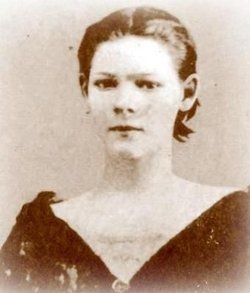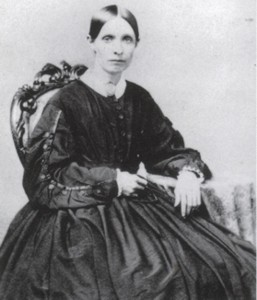Gettysburg Sunday: Cavalry After Church
The last full week of June 1863 had been a stressful time of uncertainty for civilians in southern Pennsylvania, but for the citizens of one little town, safety and confidence seemed restored as Federal cavalry arrived on the warm summer Sunday morning as two regiments of cavalry arrived.
It was not the first band of armed horsemen to move through the streets of Gettysburg. Two days earlier, on June 26, militia defenders and emergency troops had scattered as Confederate cavalry and infantry under General Early’s command burst into town from the west. For weeks, the Gettysburg civilians had lived in terror of a Confederate raid, but there had been so many previous false alarms that the actual incident caught many by surprise.

In the words of fourteen-year-old Tillie Pierce: “What a horrible sight! There they were, human beings! clad almost in rags, covered with dust, riding wildly, pell-mell down the hill toward our home shouting yelling most unearthly, cursing, brandishing their revolvers, and firing right and left. I was fully persuaded that the Rebels had actually come at last. What they would do with us was a fearful question to my young mind.”[i]
Chaos and raiding civilian properties reigned for a few hours. When General Early arrived, he gave the civic leaders an ultimatum: large quantities of supplies or a town ransom of $5,000 in gold. The Gettysburg patriarchs declared they could not meet either requirement (The merchants’ stock and bank reserve had been shipped away weeks earlier in preparation for such a situation). However, they offered that the town merchants would open the stores and let the Confederates take what they wanted, instead of destroying the town. Early agreed. The Confederates had their “all-expenses covered shopping trip,” frightened civilians, gathered horses, and burned the railroad bridge over Rock Creek. The telegraph operator escaped, but Gettysburg communication link with the outer world was still effective cut. After a night of Rebel music serenades in the town square, the troops headed out the following morning.
For many Gettysburg civilians, their feared nightmare had come true on June 26. Virtually defenseless, they town had been “ravaged” by Confederates. And the majority of the Army of Northern Virginia was still marching through Pennsylvania…somewhere.

Saturday passed in relative quiet, and on Sunday, the on-edge civilians’ spirits got a reassuring boost, when in the words of Sarah Broadhead: “About 10 o’clock a large body of our cavalry began to pass through town, and we were all busy feeding them as they passed along. It seemed to me that the long line would never get through.”[ii]
These troopers from the 5th and 6th Michigan Cavalry had originally been assigned to the defenses of Washington, but had recently been transferred to operate with the Army of the Potomac. They did not tell the overjoyed civilians that they were on an ordered patrol, not pursuing the recent Confederate raiders or intending to stay in the area. Instead, the cavalrymen seized the moment and the welcome, remembering, “Lines of men stood on either side [of the road] with pails of water or apple butter. Others held immense platters of bread….The people were overjoyed and received us with an enthusiasm and hospitality born of full hearts.”[iii]
Some Gettysburg civilians firmly believed that these cavalrymen had been sent to guard the little community and had high expectations. They did not know on that Sunday morning that these cavalrymen would linger less than a day and offer no protection. They did not know that in less than a week one of the largest battles of the Civil War would erupt in their town and farm fields.
For that moment of hope on Sunday, June 28, the Gettysburg civilians rejoiced that they had been “saved.” Blue uniforms were back in town and perhaps the memories of the Confederate raiders would ease.
Sarah Broadhead closed her journal entry for that day with these hopeful and yet foreshadowing words: “I hope they may catch the Rebels and give them a sound thrashing. Some say we may look for a battle here in a few day, and others say it will be fought near Harrisburg. There is no telling where it will be.”[iv]
Sources:
[i] Pierce, Tillie. At Gettysburg: What A Girl Heard and Saw of the Battle. Originally published in 1884. Accessed through Google Books.
[ii] Broadhead, Sarah. The diary of a lady of Gettysburg. Originally printed 1864. Page 11
[iii] Trudeau, Noah A. Gettysburg : A Testing of Courage. (Harper Collins, New York, 2002). Page 106-107.
[iv] Broadhead, Sarah. The diary of a lady of Gettysburg. Originally printed 1864. Page 11